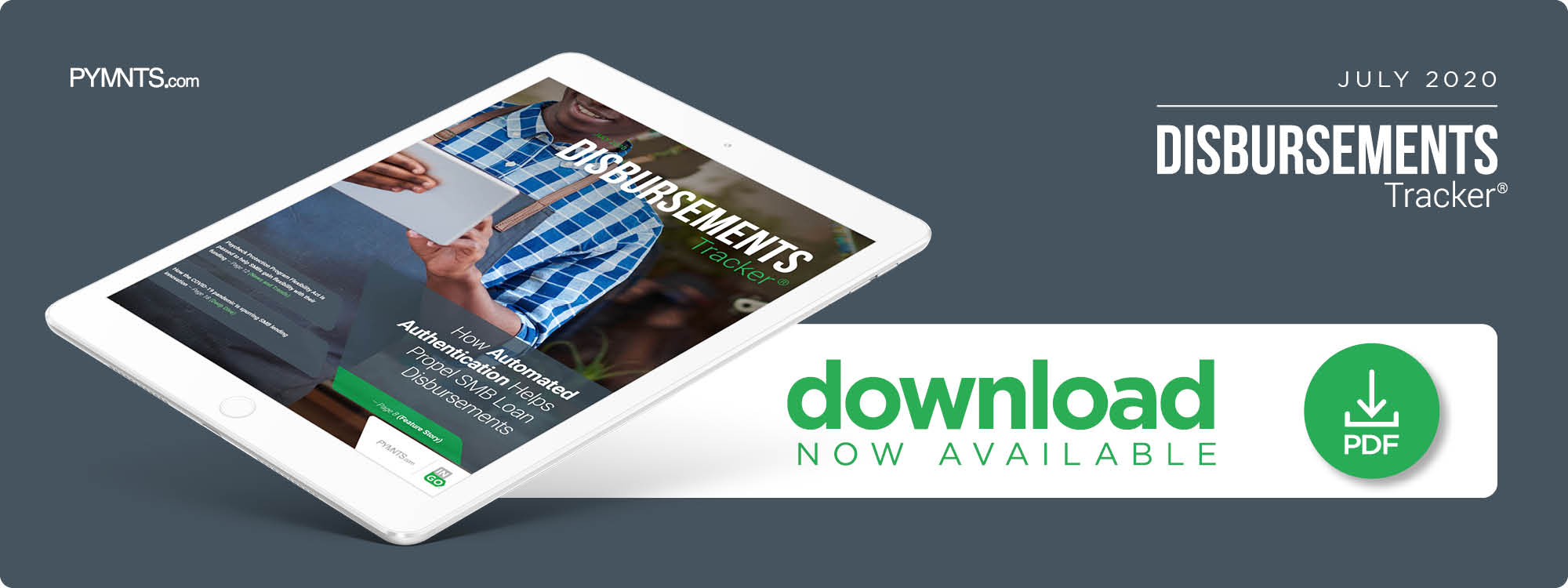Deep Dive: How The COVID-19 Pandemic Is Moving SMB Lending, Disbursements Away From Paper Checks

The small- to medium-sized business (SMB) lending industry is used to adaptation, especially since the 2008 financial crisis, when legacy financial institutions (FIs) began pulling back and FinTechs and digital players stepped up in the space. The COVID-19 pandemic has rocked the industry, too, revitalizing the ongoing shift to digital as well as prompting a resurgence in the role of more established banks as prime SMB lenders.
FinTechs have brought their innovative banking approaches into the SMB lending ecosystem, turning to artificial intelligence (AI), machine learning (ML), automated tools and digital channels to speed processes that had traditionally been paper-based. Alternative lenders like Bolstr, Kabbage and OnDeck used such technologies to approve 57.2 percent of SMB loans from January 2019 to April 2019, for example.
These solutions boost the speeds of loan approvals and disbursements, which is especially critical because SMBs need fast access to funds during the COVID-19 crisis. Pandemic-related financial troubles have led 100,000 U.S. SMBs to permanently shut their doors, and another report revealed that approximately 25 percent of small firms expect to file for bankruptcy within the next six months.
A large portion of SMBs still rely on checks to make and receive payments, however, which can lead to financial frictions, such as long waits for funds to settle and invoicing-related issues — even after these entities have received their loan funding. The pandemic is highlighting checks’ inadequacies and illustrating SMBs’ need for seamless, secure digital access to their loans. The following Deep Dive explores how the current health crisis is changing the SMB lending industry and exposing lingering frustrations with time-consuming, paper-based processes. It also examines the measures FIs and lenders can take to address these frictions.
Outdated Lending Practices Fail To Meet SMBs’ Current Needs
Interest in SMB lending has risen in the U.S. during the COVID-19 pandemic, with 50 percent of FIs in one June study stating that they planned to maintain or increase their SMB lending rates. More SMBs are moving to access government-supported programs like the Paycheck Protection Program (PPP) and the recently launched U.S. Federal Reserve’s Main Street Lending Program, with 1.6 million loans currently approved under the former. Both programs come attached with strict metrics for participating SMBs, however, and the surge in PPP interest is rapidly depleting its funding. Businesses that are unable to receive funds from these programs are thus looking to external sources, including alternative and traditional lenders.
Receiving funding quickly is critical for SMBs, with PYMNTS research showing that the COVID-19 pandemic has negatively affected 90 percent of small businesses in some way. Consistently offering the speed these firms require is proving difficult, however, as lenders find their processes can no longer keep pace with SMBs’ needs. Bank partners are also struggling to disburse loans, leading to growing frustrations among business owners as more firms in their industries shut down for good.
Lenders and FIs are confronting hurdles as well because they are not used to the sheer volume of requests they are receiving. Some are awaiting further guidance from the SBA before they begin processing applications, with one lender refraining from processing PPP loan requests until mid-April. Other businesses reported struggling because their personal banks were either not participating in the program or their applications were being rejected.
Many traditional lenders, meanwhile, are still relying on paper-based or outdated digital underwriting processes for payment approvals once government bodies give them permission to review these applications. These problems with starting the loan process are causing SMBs’ financial issues to snowball, too, as even those that receive loan disbursements via direct deposits or ACH payments must determine how to distribute the funds to employees or business partners. Slow and overwhelmed lending operations are forcing many businesses to wait for funding, and SMBs’ costly reliance on check disbursements means funneling this money to partners or employees may also take several weeks.
Financial Frustrations And Checks’ Potential Decline
Checks have been a fixture in the SMB space for decades. A 2019 study found that small firms were still the most prolific paper check users, making over 80 percent of their business-to-business (B2B) payments via the method. Its shortcomings have been evident for some time, however, and the pandemic is quickly magnifying these issues. Many SMBs that are still utilizing checks for their daily operations struggle to take their processes fully digital at a time when many brick-and-mortar businesses remain closed. This is making it difficult for them to pay their vendors, leading many to explore investing in new equipment or software to support online disbursements or electronic invoicing to promote swifter transactions.
These digital moves are likely to impact the future of check use, but SMBs must first weather the pandemic, which is not a given in markets like the U.S., where firms are facing financial hardships and dips in consumer spending. Innovating to support faster disbursements that do not rely on checks is thus dependent upon the swift reception of funding.
This means lenders must be ready to adjust their fund approval and disbursements processes. They may well determine that even digital disbursement methods such as ACH payments are no longer swift enough to fulfill SMBs’ needs. Exploring instant disbursement options paired with online tools and platforms that can expedite the loan approvals could be one way to provide the speed SMBs need to survive.

